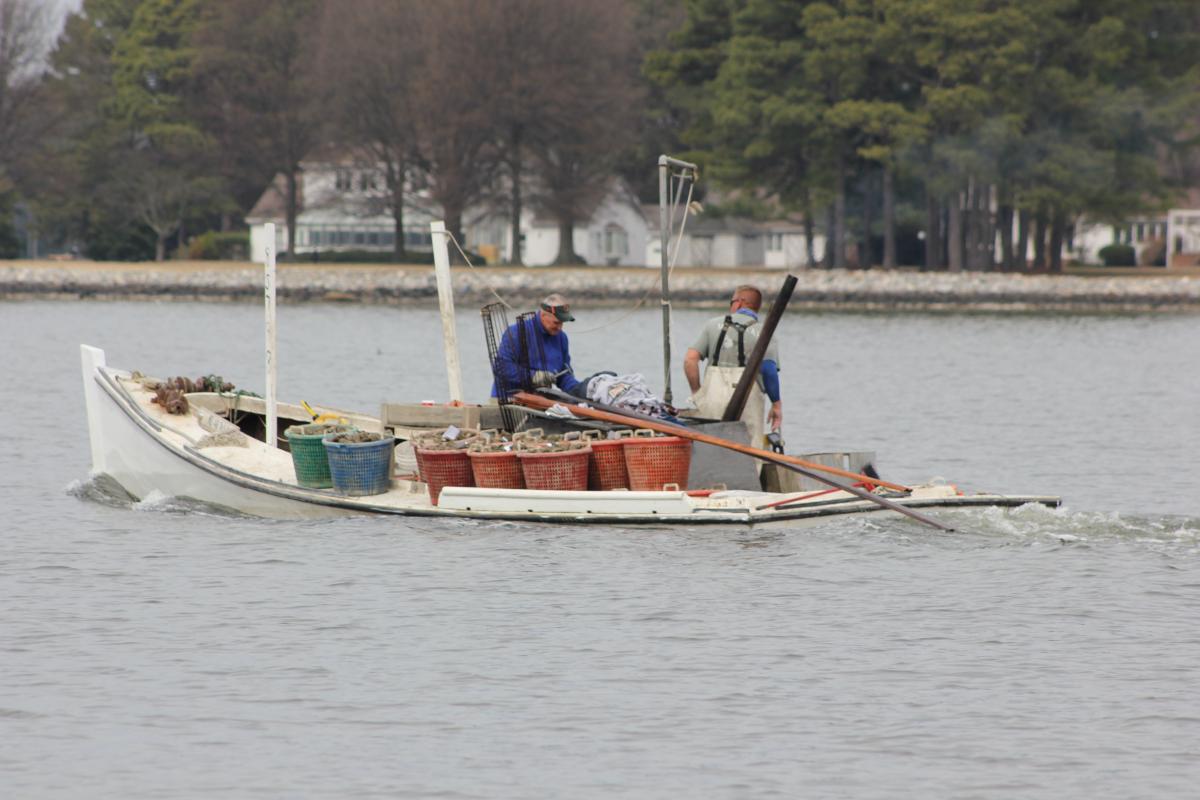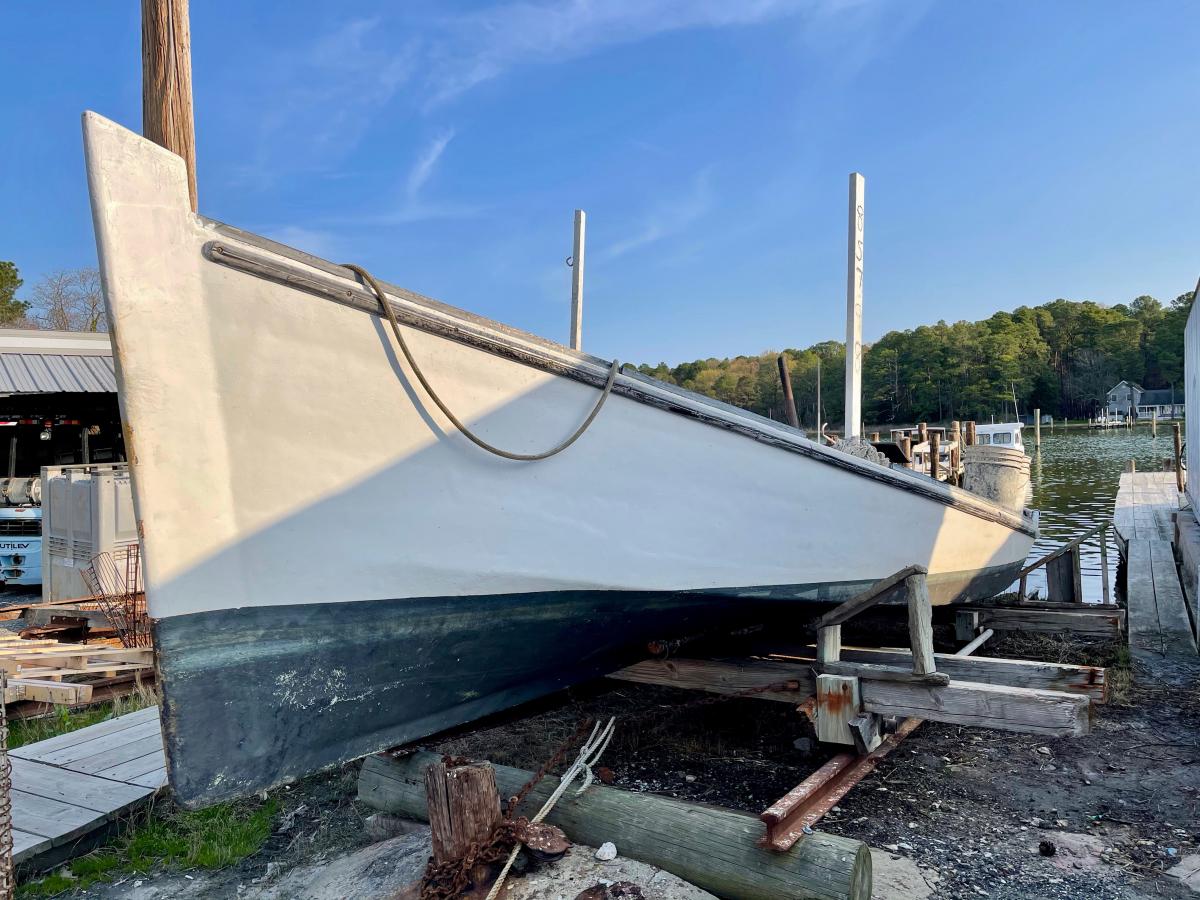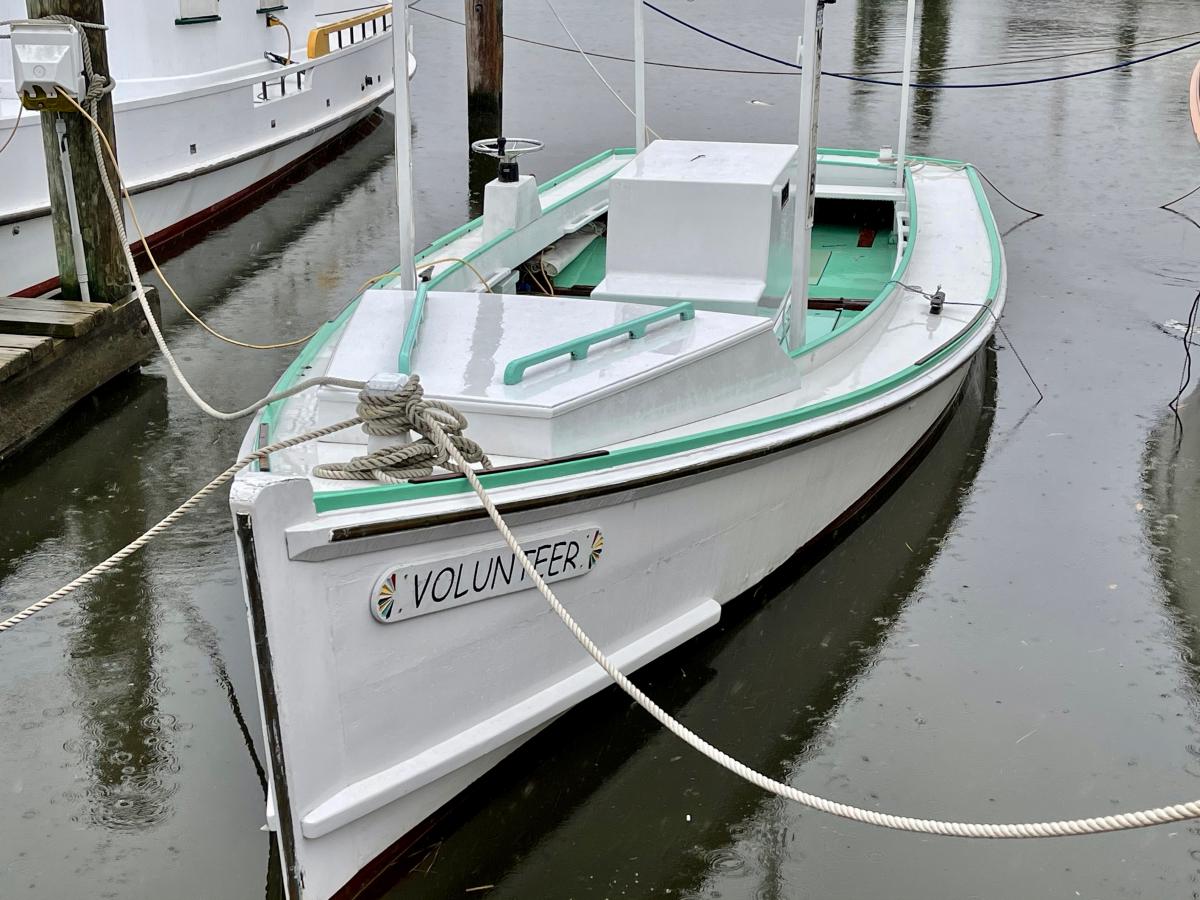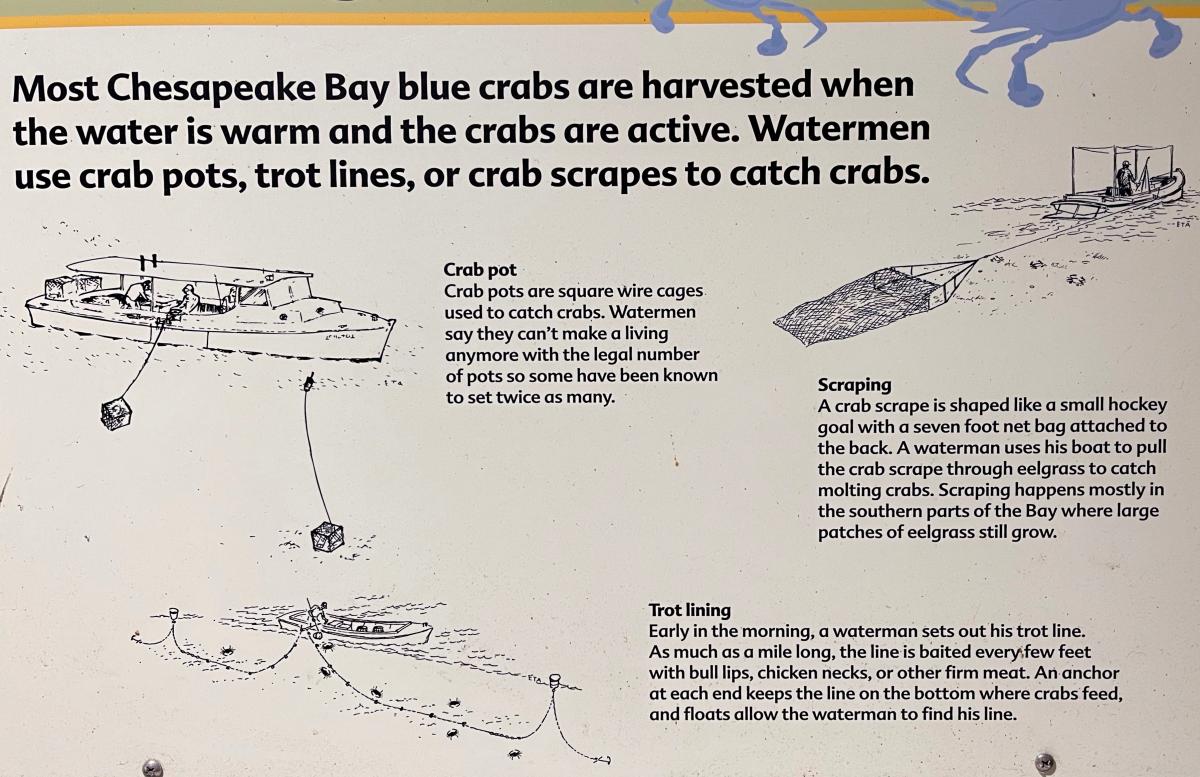
Darrin Ford and Tom Stevenson, in Ford’s adapted crab scrape, leave Broad Creek’s oyster beds for the Bozman docks after a successful morning of oyster tonging
Working on the water requires a boat. Lots of different kinds of boats for specific purposes. They can do a lot of things in a lot of different ways, adaptable depending on conditions and opportunities.
But first off they have to float. It’s always best that a boat keep most of the water on its outside rather than on its inside.

Ford’s scrape is now on the railway at PT Hambleton’s in Bozman for needed attention before her next enterprise
Albert used to have a boat built as a crab scrape. Beamy and low, its builder constructed it for the shallow, eelgrass-laden waters around the chain of islands separating Tangier Sound from the main stem of the Chesapeake Bay. I call those islands the Chesapeake archipelago: Bloodsworth, Hoopers, South Marsh, Smith, Tangier, Hoopers, Watts and many more that stud the marshes of that low country along the lower Eastern Shore.
Scrapes are designed to pull a basket-like dredge over the bottom with a rope bag at the end of it. The goal is to catch blue crabs that are getting ready to shed – peelers; crabs that are in the process of shedding – soft crabs backing out of their old hard shells to grow larger; and the completed soft crabs themselves hiding in the grasses from rockfish, rays and other predators. Just like the duck’s luck, succulent soft crabs attract lots of hungry critters, including humans.
When the dredge and bag are pulled in, watermen then go about separating crabs from grass. The boat’s low-slung nature makes it easier to pull rigs aboard.

The Chesapeake Bay Maritime Museum in St. Michael’s displays this restored crab scrape as part of its sampling of workboats indigenous to the region.
Albert’s was an old scrape whose graceful shear – her gunnel curve from stern up to stem – appealed to him. He used her in the rivers, bays, guts, creeks and other marshy waterways around Lewes, on the sea side of Delmarva. She was in steady need of attention to keep the water where it was supposed to be. That’s why he named her Colander.
Colander came to mind late in March when I was watching watermen harvesting oysters in Broad Creek north of the Choptank River mouth, inside Tilghman Island.

An interpretive sign at the Chesapeake Bay Maritime Museum in St. Michael’s illustrates some of the methods – including scraping – used for harvesting crabs.
Men anchored a wide variety of boats over the bars to gather their day’s catch. Most were of the classic Chesapeake deadrise style, but one stood out among the rest because of its distinctive character. Unlike the rest of the vessels there that day, it was not designed for oystering. A crab scrape.
So what? It floats, the engine works, there’s deck space for bushels of oysters. Its generous beam makes it stable and its wide gunnels provide a steady platform for tonging. And just like its low freeboard makes it easy to hoist crab scraping dredges aboard for harvesting, that also favors bringing aboard tongs filled with rock-heavy oysters.
The first thing you wonder when you see it is whether the boat is sinking, it sits so low in the water. Then you notice its high-stemmed bow. Despite its appearance it all works.
This week Darrin Ford’s scrape sits on a railway at PT Hambleton’s boatyard and seafood operation in Bozman. Oyster season over, the vessel needs attention before Ford turns her to his next harvesting enterprise. Gunnel repairs, fiberglassing here and there, bottom paint.
She’s a far cry from what she looked like 40 or 50 years ago when she first left one of the Tangier Sound boatyards. But her stout lumber and deceptive design, regular patching and maintenance, keep her in the game, enabling Ford to make a living harvesting the Bay’s bounty.
Dennis Forney grew up on the Chester River in Chestertown. After graduating Oberlin College, he returned to the Shore where he wrote for the Queen Anne’s Record Observer, the Bay Times, the Star Democrat, and the Watermen’s Gazette. He moved to Lewes, Delaware in 1975 with his wife Becky where they lived for 45 years, raising their family and enjoying the saltwater life. Forney and Trish Vernon founded the Cape Gazette, a community newspaper serving eastern Sussex County, in 1993, where he served as publisher until 2020. He continues to write for the Cape Gazette as publisher emeritus and expanded his Delmarva footprint in 2020 with a move to Bozman in Talbot County.



Write a Letter to the Editor on this Article
We encourage readers to offer their point of view on this article by submitting the following form. Editing is sometimes necessary and is done at the discretion of the editorial staff.